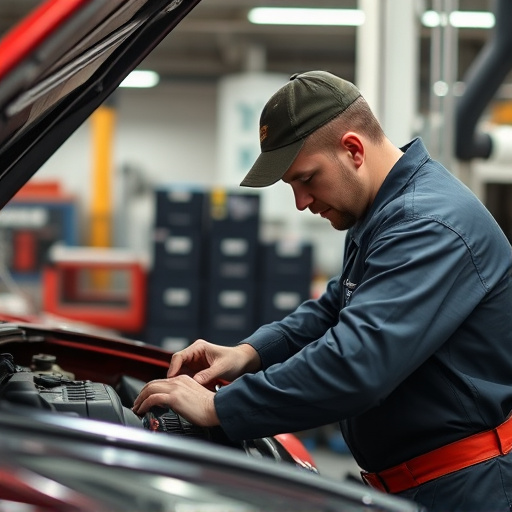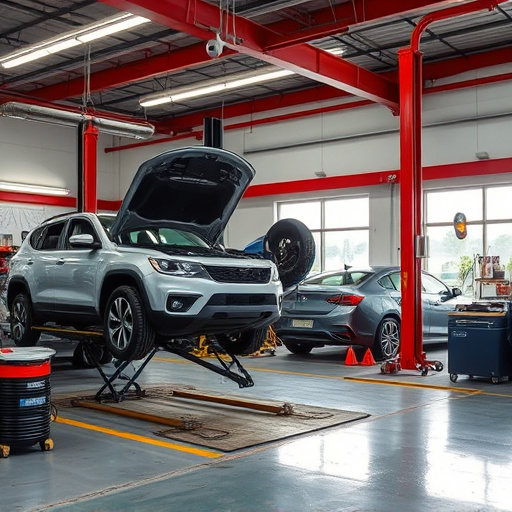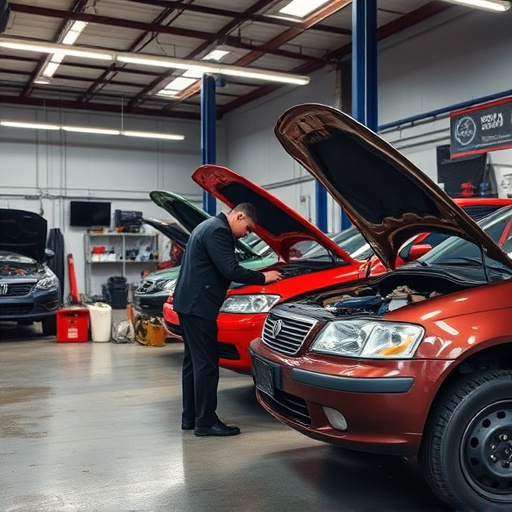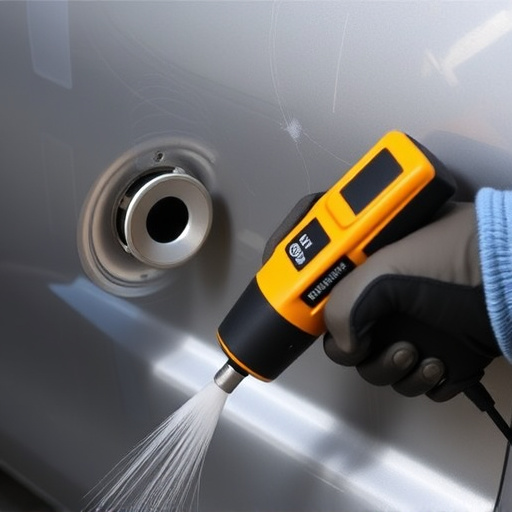A Tesla heat pump inspection ensures optimal thermal management for homes by assessing key components through safety checks, visual assessments, thermal loop testing, and refrigerant analysis. This process optimizes system efficiency, longevity, and energy cost savings, highlighting the eco-friendly benefits of Tesla heat pumps over traditional HVAC methods.
“Discover the ins and outs of Tesla heat pump inspections with our comprehensive guide. Learn how these innovative systems, designed for energy efficiency, can be meticulously evaluated through a thorough inspection process. From understanding the fundamentals of Tesla heat pump systems to the crucial step-by-step inspection procedure, this article covers it all. Delve into the key aspect of thermal loop testing, ensuring your system operates at peak performance. Stay informed and make informed decisions regarding your Tesla heat pump.”
- Understanding Tesla Heat Pump Systems
- Inspection Process: Step-by-Step Guide
- Thermal Loop Testing: Ensuring Optimal Performance
Understanding Tesla Heat Pump Systems
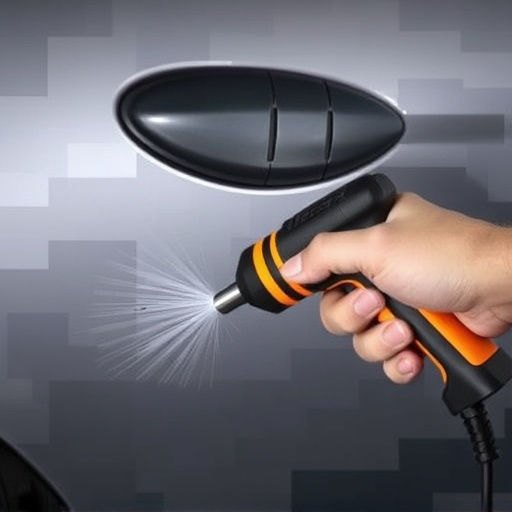
Tesla heat pump systems are cutting-edge technology designed to efficiently regulate indoor temperatures using outdoor air and ground sources. These innovative systems offer a sustainable alternative to traditional heating and cooling methods, making them a popular choice among eco-conscious homeowners. Understanding how they work is crucial for anyone considering installation or undergoing a Tesla heat pump inspection.
During a Tesla heat pump inspection with full thermal loop function testing, auto repair services experts assess the system’s performance by examining key components like the evaporator coils, condenser units, and refrigerant lines. This process ensures that each part functions optimally, enhancing energy efficiency and overall system reliability. Unlike traditional HVAC systems that solely rely on electricity or fossil fuels, heat pumps utilize a small amount of power to move thermal energy from one location to another, making them highly energy-effective and potentially reducing utility costs significantly over time. Moreover, unlike tire services or autobody repairs which address specific vehicle issues, a Tesla heat pump inspection focuses on the intricate thermal management system, contributing to a home’s overall comfort and sustainability.
Inspection Process: Step-by-Step Guide
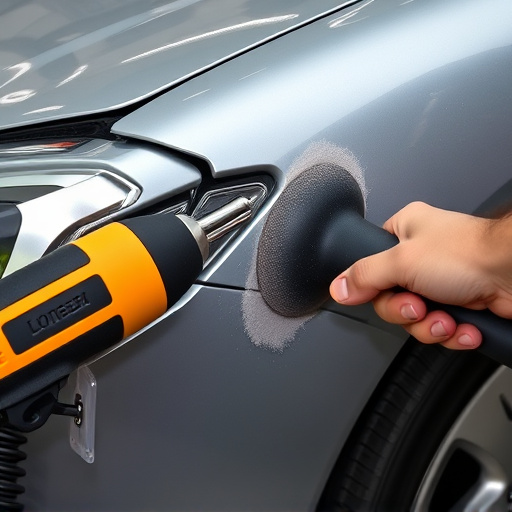
A Tesla heat pump inspection involves a meticulous process to ensure optimal performance and energy efficiency. Here’s a step-by-step guide:
1. Safety First: Begin by ensuring all electrical connections are secure and isolated, similar to procedures followed in an auto collision center for vehicle repair. This safety measure is crucial when dealing with sensitive thermal systems.
2. System Checkup: Inspect the heat pump for any signs of damage or wear, focusing on components like the evaporator coils, condenser, and refrigerant lines. Car bodywork services often highlight exterior marks that could indicate internal issues, so pay close attention during this visual assessment.
3. Thermal Loop Testing: Conduct a full thermal loop function test to verify the heat pump’s capability to transfer heat effectively. This involves checking the temperature differentials at various points in the loop, ensuring they align with expected values. If discrepancies are found, it may point to issues with refrigerant charge or component malfunction.
4. Refrigerant Charge: Verify the refrigerant charge using specialized equipment, ensuring it falls within manufacturer specifications. An incorrect charge can lead to inefficient heating and cooling, similar to how vehicle repair technicians address engine performance issues.
5. Fan Operation: Test both indoor and outdoor fans for proper operation, checking their speeds and directions. Ensuring these fans are functioning as intended is key to maintaining balanced air circulation throughout your space.
Thermal Loop Testing: Ensuring Optimal Performance
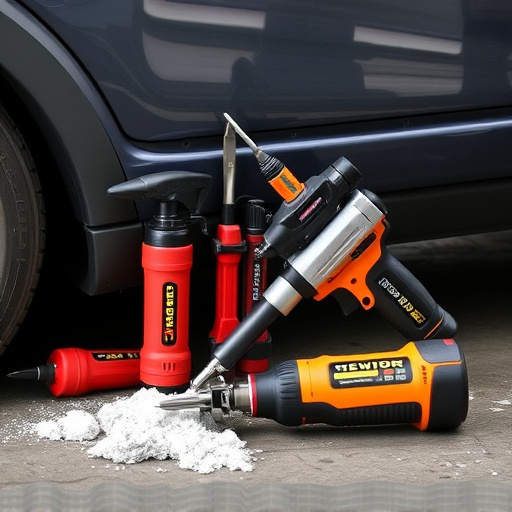
Thermal Loop Testing is a critical component of a thorough Tesla heat pump inspection, as it ensures that the system operates at its peak efficiency. This process involves circulating a refrigerant through the entire heat pump loop to verify its integrity and performance. By simulating real-world conditions, technicians can identify any leaks or inefficiencies that might be present but not readily apparent during manual checks.
During this test, the car body shop’s experts monitor temperature differentials at various points in the loop, looking for disparities that could indicate issues with the heat exchangers, pipes, or other components. This is crucial not just for optimal performance but also for long-term sustainability and cost savings, as a well-maintained Tesla heat pump can significantly reduce energy consumption—a key benefit of choosing electric vehicles over traditional gas-powered cars, even in car body repair scenarios where aesthetics are less of a concern than functionality.
A thorough Tesla heat pump inspection, including full thermal loop function testing, is key to ensuring optimal energy efficiency and performance. By following a structured step-by-step guide and employing advanced thermal loop testing methods, homeowners can maintain their systems’ integrity and reap the environmental and financial benefits of this innovative technology. A well-cared-for Tesla heat pump promises a comfortable indoor climate while reducing carbon footprints, making it an excellent investment for sustainable living.
